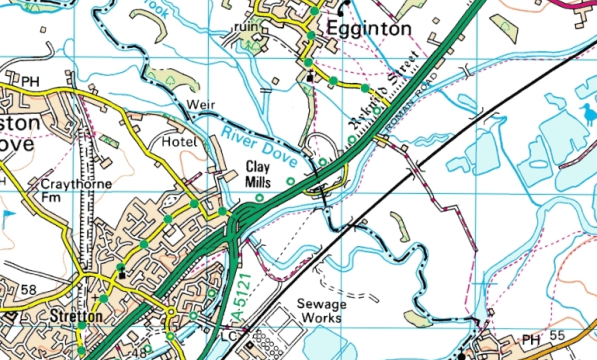'Ban bikes from A-roads' suggests judge

Carlton Reid has drawn attention to the letter, pointing out that while cyclists may prefer not to use high speed trunk roads, banning them entirely would be a drastic step.
Meanwhile Martin Porter QC - the Cycling Lawyer - has written a response to Tonking that elegantly demolishes his argument.
The judge suggests that the difference between motorways and dual carriageways is insignificant and therefore the same restrictions should apply on the former as on the latter. In some respects of course he is right - the difference between a minor motorway and major dual carraigeway trunk road is minimal in appearance; yet the purpose and origins of each type of road are fundamentally different.
Motorways, constructed under specific legislation, are always designed to provide an entirely segregated system of movement for high speed motor vehicles, often in parallel to existing roads. By contrast, A-roads usually follow the existing alignments of old roads - normally the most direct and flattest route between major settlements. Excluding cyclists from A-roads without proper alternatives would make cycle journeys either impossible, or slow and circuitous.
One immediate remedy, suggested in the light of hearing much evidence about such cases, is to remove all cyclists from any dual-carriageway which is not subject to a speed limit of 30, or possibly 40, mph."
Judge Simon Tonking
Tonking prefaced his comments in The Times with reference to the 'painful duty' of presiding over cases in which careless and dangerous driving has led to the death of cyclists on dual carriageways. Before we have too much pity for him, consider his record in one of these cases.
Earlier this year he sentenced the killer of Pat Kenny, a champion cyclist and CTC member, who had been killed while cycling on the A38, near Burton-on-Trent. The driver had pleaded not guilty to causing death by careless driving - yet a 4-day trial saw a jury find him guilty. During the trial the prosecutor made clear that the existence of a cycle track on the far side of the road was irrelevant to the case - Kenny had a right to use the road.
Yet, when it came to sentencing, Tonking declared that "this is not a case for a custodial sentence, I don’t think a custodial sentence would do anyone any good. I accept you are normally a careful and considerate driver. This was a complete aberration." He handed down a 12 month disqualification - the absolute minimum under sentencing guidelines - £3,500 costs and a community sentence.
Such a sentence is not unheard of: the offence of 'causing death by careless driving' is only a few years old, and, despite carrying a maximum term of 5 years in jail, non-custodial sentences are the norm, with only one in five offenders receiving custody in 2011. CTC opposed the creation of the new sentence and objected to the prosecution guidance and sentencing guidelines when they were proposed 5 years ago.
It is true that the risks of cycling on major roads are disproportionately high - you are 20 times more likely to be killed per mile on a rural A-road than on a minor urban road. That fact alone should urge local authorities - and the Highways Agency - to make the roads safer for cycling by making tackling the worst junctions and providing adequate alternatives where possible. However, the provision of cycle facilities of a low standard alongside major roads - such as the cycle track at this location - should never be enough of an excuse to ban cyclists from the road.

